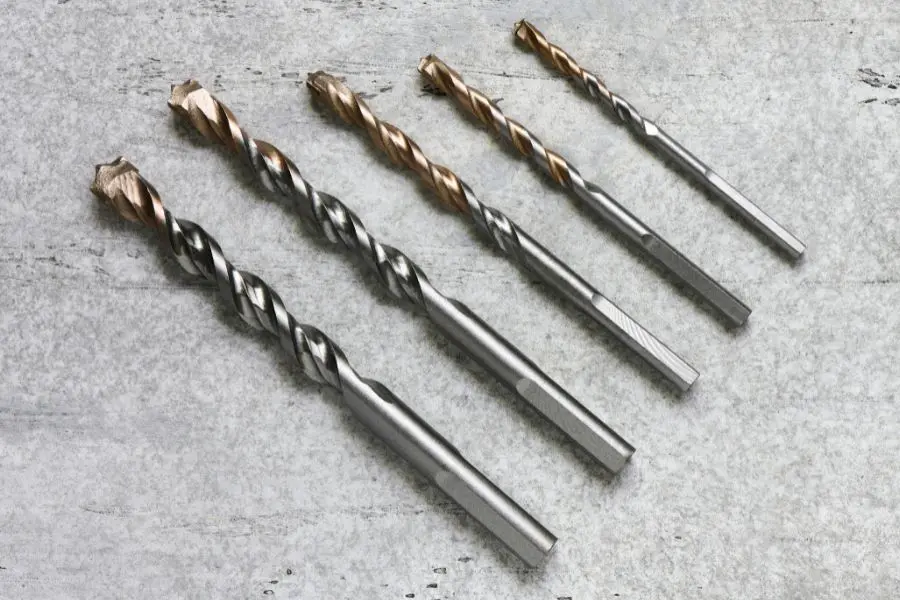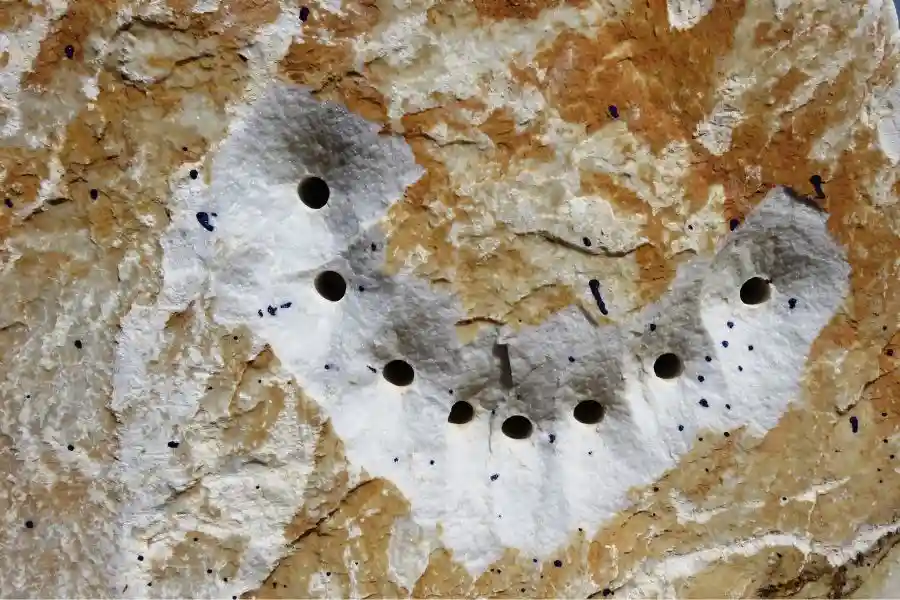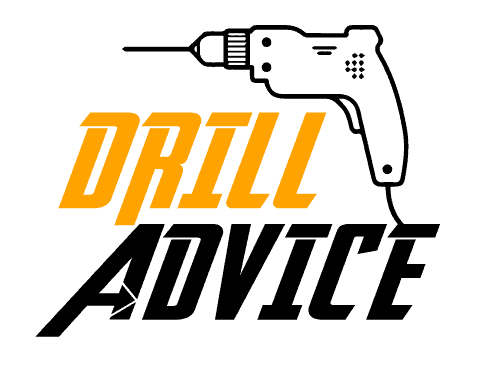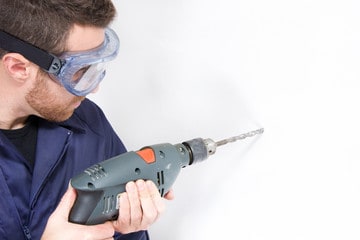Stones are harder and tough material. According to the types of stones, their hardness can be varied. Hence, when drilling into concrete, you should use harder tools than stones.
So when you start drilling into stone, you can use masonry drill bits and a hammer drill as the drilling tools. Carbide-tipped masonry drill bits and SDS max hammer drills are the best tools for stone drilling. More than that, you should have suitable safety instruments and dust removal methods. Then you can follow the below process step by step.
What Instruments Need for Stone Drilling?
You should have the below tools to drill a hole in the stone.
- Hammer drill ( Regular hammer drill, SDS, SDS Plus or SDS Max)
- Tungsten carbide drill bit
- Water ( If needed)
- Essential Safety Instruments (gloves, safety glasses, shoes, mask, etc)
- Power supply
- Cleaning brush
- Closing cap
How to Drill Stone in 8 Steps?
1. Choose a Hammer Drill as a Drilling Machine
When you drill stones, you should choose a suitable drilling machine. The best drilling tool for DIY projects is an electric hammer drill.
Hammer drills have a hammering mechanism. Here the drill bit moves forward and backward while it is rotating.
As a result of this, drill bits can crush the front material rather than cut and remove it. This is a great technology for drilling hard and tough material such as stone, concrete, etc.
The drill bit will move forward and backward a thousand times per minute. This is called Blows Per Minute (BPM).
Normally, a Hammer drill has more than 30,000 BPM which is incredibly helpful for drilling tasks.
Hammer drills are also classified into 02 main categories.
Regular or Percussion drill – In percussion drills, both the drill bit and chuck will move forward and backward. Hence its hammering effect is lower
SDS, SDS plus, and SDS max – In these hammer drills, the drill bit is moving forward and backward without the chuck moving.
Due to the special geometry of the drill bits, those can be moved along the rails on the bit. Hence it is more powerful than regular hammer drills.
You will need a hammer drill when you are drilling concrete and bricks
2. Choose a Masonry Drill bit for Stones
Masonry drill bits should use to drill into stones. Masonry drill bits are made with a combination of these materials such as high-speed steel, tungsten carbide, titanium, etc. Hence, masonry drill bits are harder than stone. As a result of this, these will be able to withstand friction and heating.
Masonry drill bits are of two types according to the structure.
Regular masonry drill bits and SDS masonry drill bits are them. In regular masonry drill bits, there is a circular shank and in SDS drill bits, there are rails that help to move the bit quickly.
When we drill stones, we should know the drill bits’ sizes. Normally we can use 1/8” to 1” drill bits to drill stone. If the hole is larger than that, we have to use core bits.

Drill bit cutting edge for the stone drilling should be harder than stone. Hence these are made with titanium carbide and tungsten, which are very tough and good for stones.
Stone drilling masonry drill bits don’t have a sharp point angle. Because of the percussion, it has dulled. That is not a huge problem in stone drilling.
Most masonry drill bits for stones are coated with different materials such as titanium, carbon, tungsten, etc. The reason for these coatings are reduced friction, reduced overheating and increased durability.
When you use a drill bit for stone drilling you should consider these things before buying a drill bit.
3. Wear Proper Safety Instruments
When you work, you should wear personal protection equipment (PPE). These are essential for body safety as well as the surroundings in which you are working. Hence, you should wear these things before using drilling stones.
- Eye Protection – protect from dust and debris
- Ear Protection – Protect from higher decibels
- Glous – For hand protection
- Safety Shoes – For foot protection
- Gas Mask – Protect lungs from drilling dust.
- Helmet – For head safety
4. Drill a Pilot Hole on the Stone
When drilling on stone, it’s important to create a pilot hole first so that you can ensure that your drill bit doesn’t slip or wander off track.
When you drill a pilot hole, you can use 1/8”, 3/8”, and lower-diameter drill bits to drill the pilot hole. The depth of the pilot hole can be 1/4” – 1”. It depends on the drill bit that you are going to use for deep drilling.
4. Start with Lower RPM and Higher BPM
When you drill into stones, you should know these things about stone drilling. You should use a lower RPM at the beginning. In the beginning, you can start at 100 RPM or less until the cutting edge penetrates a little bit inside the material. Then you can increase the RPM gradually.
When you drill with a higher RPM, the drill bit will slip on the surface. Hence it will not drill the exact point you need. If there is a pilot hole, you can place the drill bit on the exact place and start drilling confidently.
When you drill stone, you can use 2000-3000 RPM for smaller drill bits such as 1/8” – 1/2”. But when you go big sizes you should use 400-500 RPM. It will prevent the drill bit from breaking and overheating.
5. Apply Water as Coolant
When you use water for stone drilling, you can expect 2 main things.
- Cools the drill bit
- Reduces the drill dust
During the drilling tasks drill bit can be heated due to the friction of the drill bit and the material surface. As a result of this, it tends to heat and then overheat.
As well as we can see, drill dust is spread over the place badly. In order to solve both we can use water which is free and easy to supply. But don’t use water into the drill. It will quickly burn.
6. Clean the Hole

If you have finished drilling into the stone, it is time to clean the hole. The drill bit hole will be with lots of dust and debris. So you can use a vacuum or compressed are for removing the dust.
First, you remove the dust and then use a small wire brush to clean the hole. After you have used the brush, you should remove the dust particles using a vacuum or compressed air.
If you have used water as a coolant, you cant use air cleaning. You need water to clean the drilled hole. First, you need to use the brush and then use water to remove the fine particles.
7. Check the Drilled Hole Before Use
After you have cleaned the drilled hole in the stone, you can use it for your purpose, such as anchoring. But you should check whether there are any cracks before you use it. If there is any cracks, the anchor will rust and its service life will be shorter. So it is better to make sure the hole is alright for your task.
What You Should Avoid Drilling Stone?
You should avoid these 7 things when you are drilling stone using a hammer drill. It tends to improve the safety of the user and tool as well.
- Start drilling without wearing proper safety equipment – Always wear safety goggles, gloves, and a dust mask when drilling stone. These will protect you from flying debris and dust particles.
- Using the wrong drill bit for the stone drilling – Not all drill bits are suitable for drilling stone. You should use a masonry bit, which is specifically designed to handle the hardness of stone.
- Drilling too fast into the stone with higher pressure – Drilling a stone requires patience. If you drill too fast, you can cause the bit to overheat and wear out quickly. You could also crack or break the stone.
- Drilling without water as coolant – Drilling stone can generate a lot of heat. To prevent your drill bit from overheating and to reduce dust, it’s a good idea to use water to cool and lubricate the bit.
- Drilling Without a pilot hole on the stone – For larger holes, it’s advisable to drill a smaller pilot hole first. This will guide your drill bit and make the drilling process easier.
- Applying too much pressure on the tool – When drilling stone, let the drill do the work. Applying too much pressure can cause the drill bit to get stuck or break

